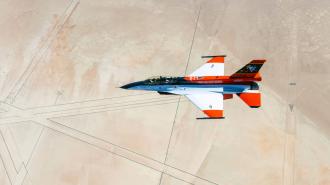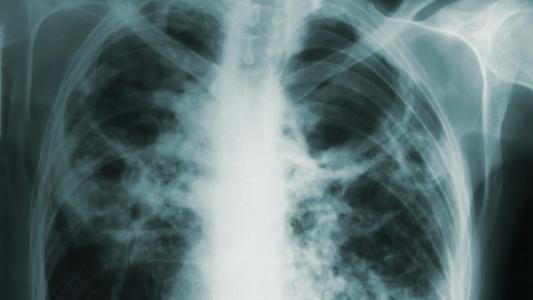For the first time, an AI fighter pilot faced off against a human pilot in a “dogfight” using actual jets in the air — a huge milestone in autonomous flight and military automation.
“The X-62A team demonstrated that cutting-edge machine learning-based autonomy could be safely used to fly dynamic combat maneuvers,” said Frank Kendall, secretary of the Air Force. “The team accomplished this while complying with American norms for safe and ethical use of autonomous technology.”
The challenge: AI-controlled planes could be a boon to the military. Not only could they reduce injuries and accidents to pilots, AIs also have the potential to rapidly analyze a lot of data — allowing for more informed decisions, more quickly.
“The best pilot you’re ever going to find is going to take a few tenths of a second to do something,” Kendall said in 2023. “The AI is going to do it in a microsecond — it’s gonna be orders of magnitude better performance.”
Before the military can give AIs control of fighter jets, though, it needs to know it can trust the systems to do what they’re supposed to do. That means not only completing their objectives, but doing so in a way that follows the same rules of safety and ethics that Air Force pilots follow.
The best of the AIs beat the human pilot 5-0 in the championship match.
The idea: DARPA (the Defense Advanced Research Projects Agency) decided to test the concept by training an AI to operate a fighter jet during a close-range battle with another aircraft, also known as a dogfight.
“Dogfighting is extremely dangerous, so if machine learning can operate effectively in an environment as dangerous as air-to-air combat, it has great potential to earn the trust of humans as we look to applications that are less dangerous but equally complex,” said Col. James Valpiani, commandant of the Air Force Test Pilot School.
Flying ACE: In 2019, DARPA launched the Air Combat Evolution (ACE) program to develop its AI fighter pilot, and in 2020, eight teams competed in the AlphaDogfight Trials Final, pitting their trained AIs against one another — and a real human pilot — in simulated dogfights.
The best of those AIs beat the human pilot 5-0 in the championship match.
“Dogfighting was the problem to solve so we could start testing autonomous artificial intelligence systems in the air.”
Bill Gray
The physics of the real world is incredibly hard to simulate, though, leading to a phenomenon called the “sim-to-real gap,” where an AI doesn’t perform as well as it did in simulations when given control over something real, like a robot, a car, or an aircraft.
The only way for DARPA to find out if its AI fighter pilot is up to the task was to give it control over a real jet, which it did for the first time in December 2022 using a modified F-16 jet, known as the X-62A or VISTA (“Variable In-flight Simulator Test Aircraft”).
“We didn’t run into any major issues but did encounter some differences compared to simulation-based results, which is to be expected when transitioning from virtual to live,” said Lt. Col. Ryan Hefron, the DARPA program manager for ACE, after those flights.
The ultimate test: By September 2023, the ACE team decided its AI fighter pilot was ready for a dogfight against a human F-16 pilot, and it performed exactly as hoped during the combat scenario — safety pilots were onboard VISTA, but they never had to take control of the plane.
“We built up in safety using the maneuvers: first defensive, then offensive, then high-aspect nose-to-nose engagements where we got as close as 2,000 feet at 1,200 miles per hour,” said Lt. Col. Maryann Karlen, deputy commandant of the Air Force Test Pilot School.
Looking ahead: The ACE team isn’t saying who won these first dogfights between its AI fighter pilot and the human pilot or if they kept score, but they have said they plan to continue testing through 2024 and applying what they learn from the dogfights to other types of scenarios.
“Dogfighting was the problem to solve so we could start testing autonomous artificial intelligence systems in the air,” Bill Gray, chief test pilot at the Air Force Test Pilot School. “Every lesson we’re learning applies to every task you could give to an autonomous system.”
We’d love to hear from you! If you have a comment about this article or if you have a tip for a future Freethink story, please email us at [email protected].






